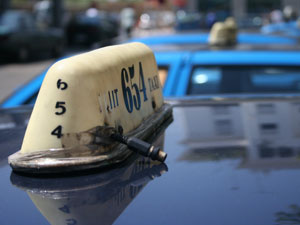Morocco Car rental - driving a car
 Traffic
rules: Be especially careful in Rabat, as this city is really policetown
with an officer on every corner.
Traffic
rules: Be especially careful in Rabat, as this city is really policetown
with an officer on every corner. - Speed limits in Morocco: 40 in the cities, 60 or 80 on bigger roads, 120 on the highway. There are plenty of speed checks around Rabat and Casablanca. Mostly you will easily see the policeman with his camera on a tripod, but sometimes they are hiding behind some bushes. If you get caught you will pay 400 dirhams (about 40 euro).
- Road signs: In the city centres of the big cities of Morocco there are no road signs at all. Getting to the highway in for instance Casablanca is very hard if you don't have a good map which includes the outskirts of town. Sometimes you will have to follow the arrows towards the supermarket Marjane, which is always next to a highway and often a lot better indicated than the highway itself.
- Driving after dark: Try to avoid driving on provincial roads the first hours after darkness has fallen. There is still plenty of traffic on the roads and pedestrians, cyclists and motorbikes (without lights) around villages along the road have a suicidal behaviour. You will only see them in the very last moment if you are lucky enough not to be blinded by the strong headlights of cars driving in the opposite direction.
- Highway: There is a very good highway between Casablanca via Rabat to Fez and Tanger. There is a French style system of Peage (road toll). Toll prices are low for Western standards, but high enough to keep those dangerous Mercedes grand taxis and most of the old and wild driving trucks out. You can easily drive 120 kilometers an hour. At night you might be blinded by the beam headlights of cars in the other direction, but it is still a lot better than on the provincial roads.
- Driving safety:
- A large part of the Moroccans does drive safely, but the Moroccan taxis, especially the grand taxis, are real cowboys that make travelling through Morocco a lot less safe, especially when they start overtaking trucks on the most dangerous places.
- Now and then you will also meet young Moroccans with fast cars which are probably even more dangerous than the grand taxis. You will meet a lot of them in Casablanca, where driving is at its most dangerous.
- You will see a lot of police along the roads, checking here and there a car. There are also a lot of manually operated speed cameras.
- There are good highways between Casablanca (and even further until 30 km before El Jadida), Rabat and Fes, where you can easily drive 120 km per hour. The fact that you have to pay (French system of payage) for using the highways makes also that there is little traffic.
- Driving at night in Morocco is not recommended as cars driving in the opposite direction are blinding you with their full lights which they (and you also) have to use to see the cyclists (no lights) and pedestrians which are dangerously walking in the complete darkness at the side of the road. (you will see them even now and then on the highway).Now and then you will be face to face with an overtaking grand taxi, break and move to the side if you want to stay alive, but check for pedestrians first. Arrows with directions how to get out of big towns are very rare, so you will need a good map. You could also follow the more frequent arrows to the big supermarket Marjane, which is always situated next to the highway.
